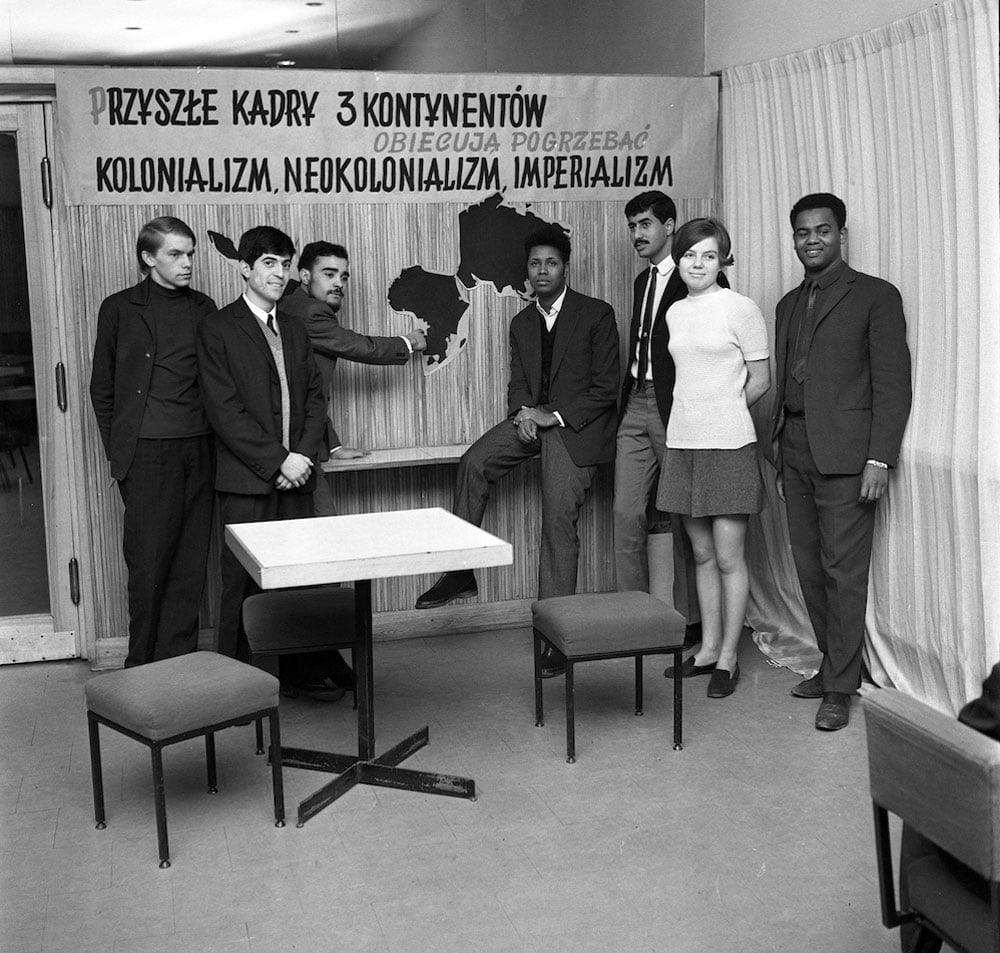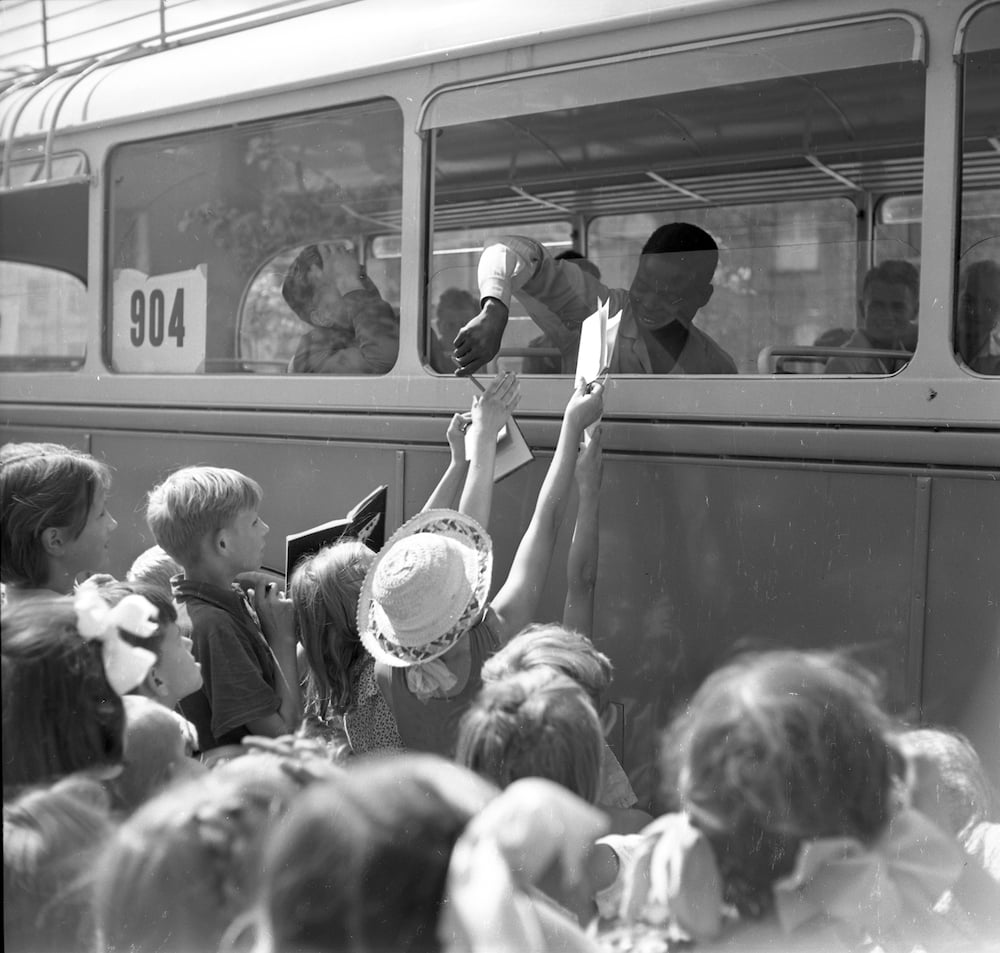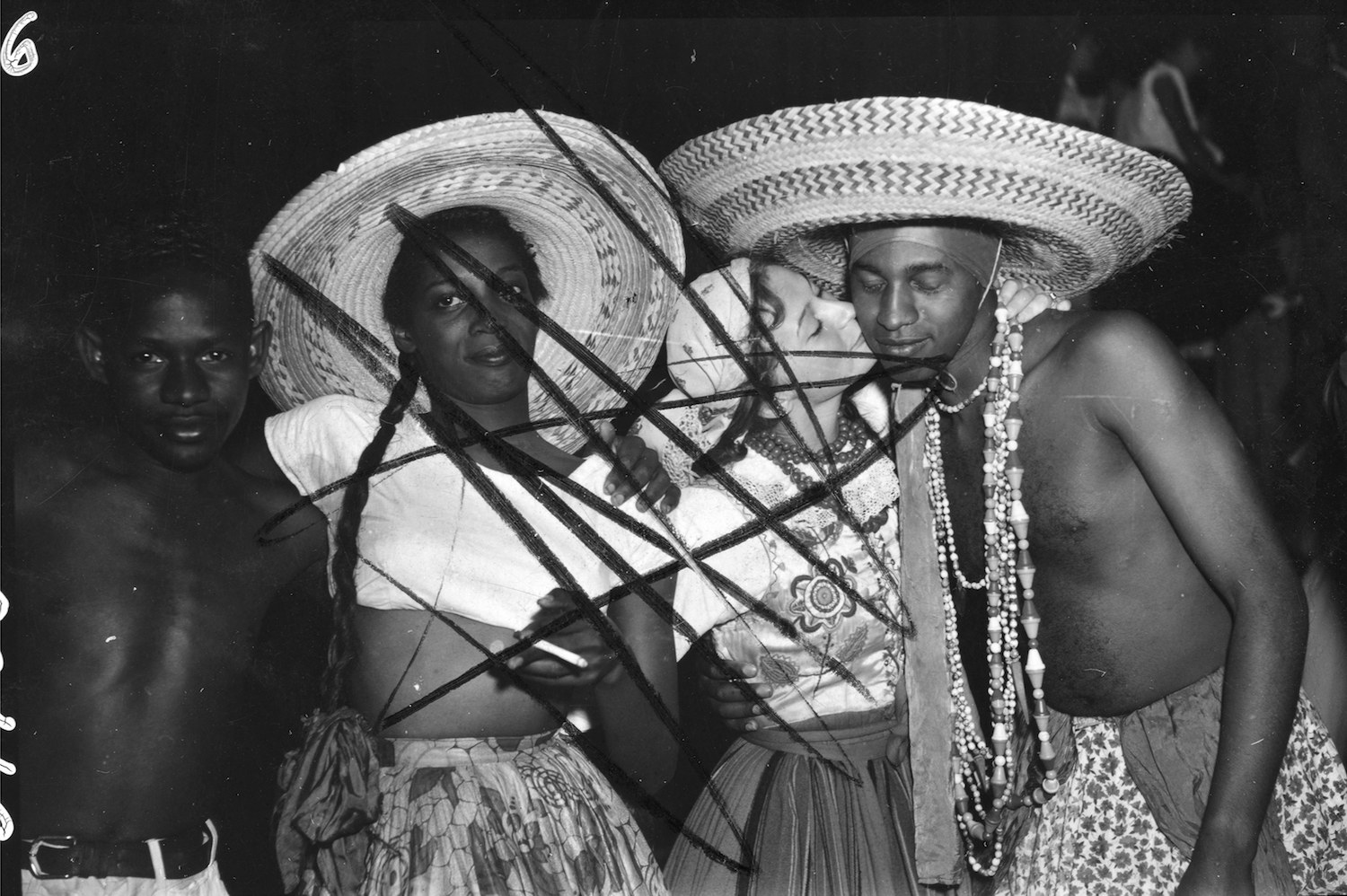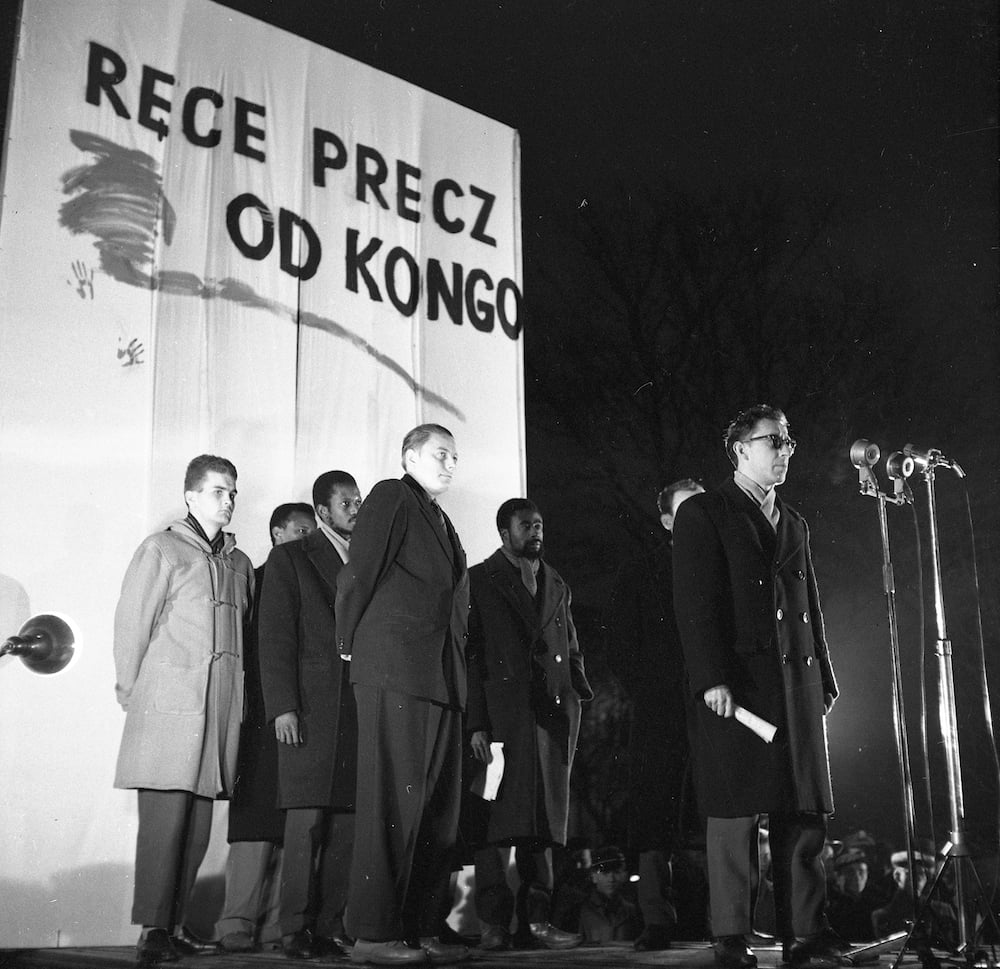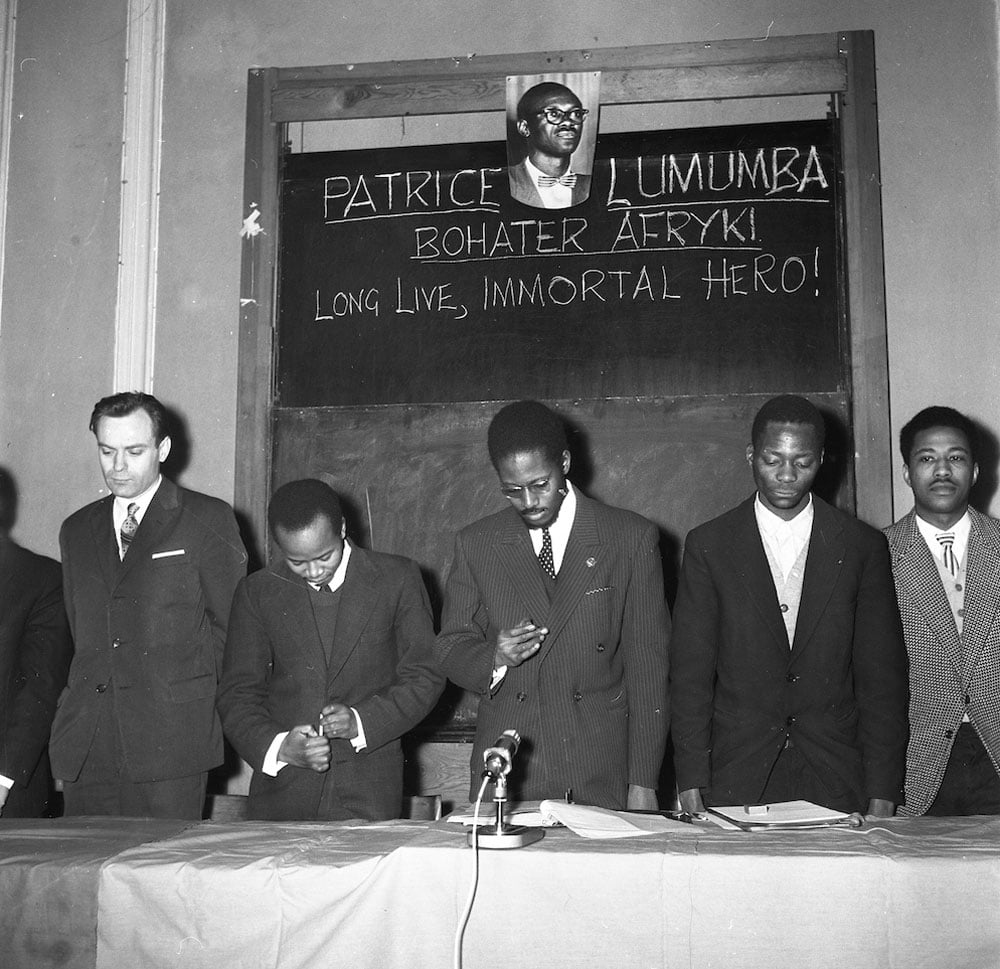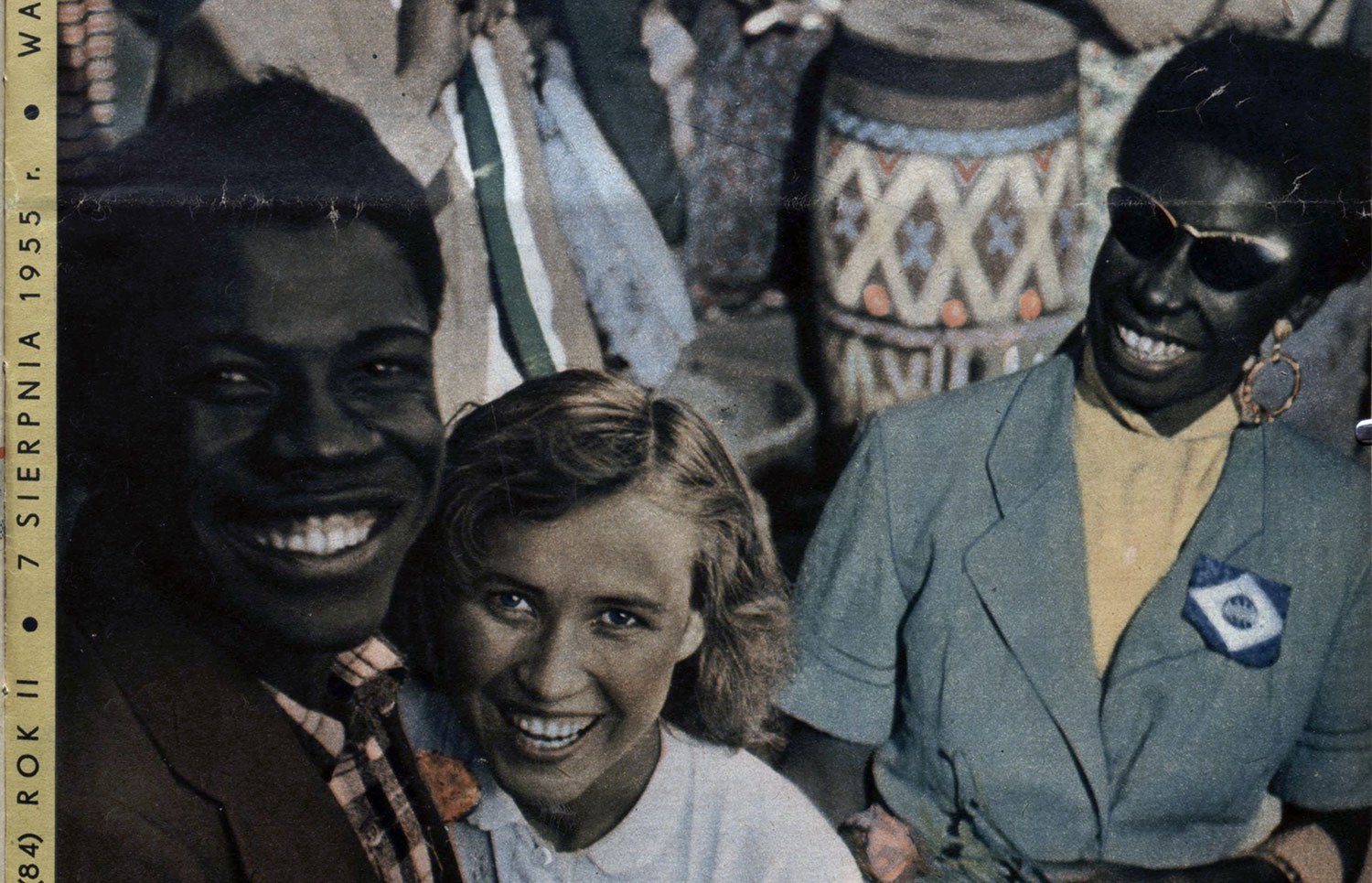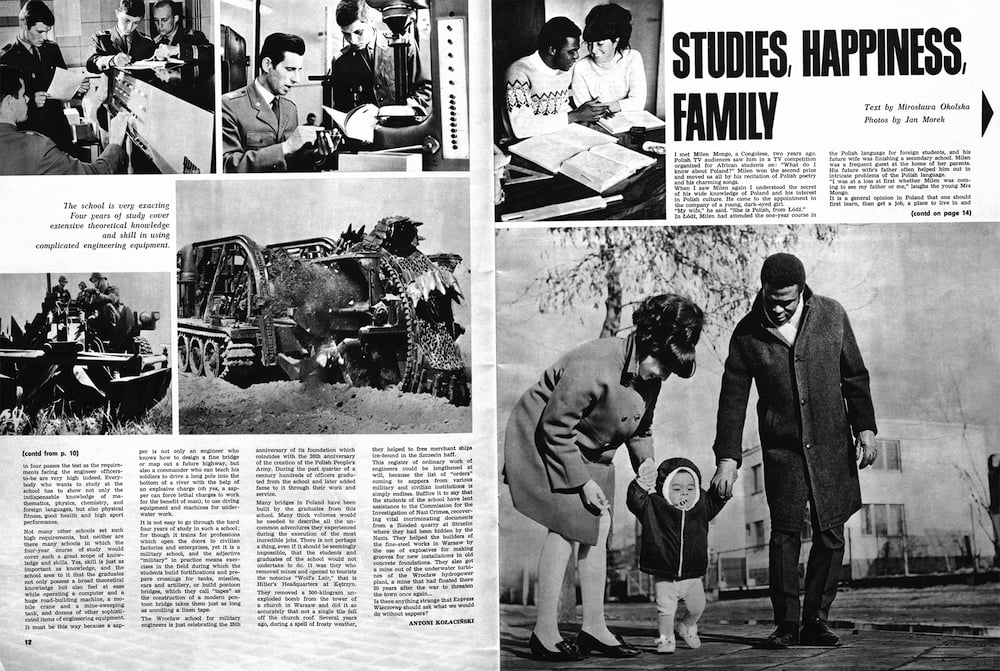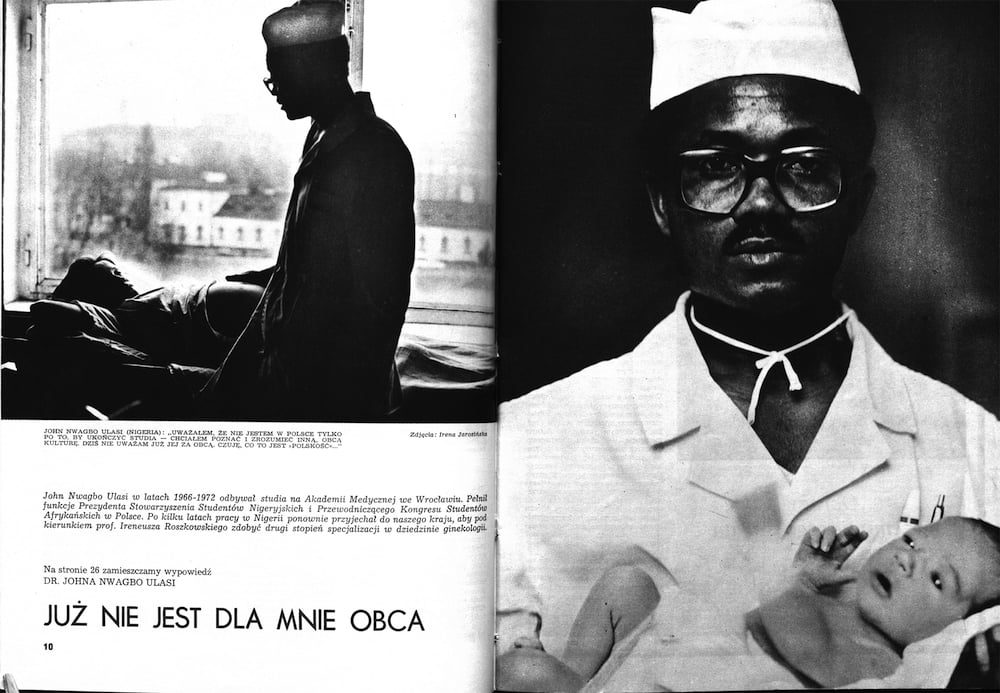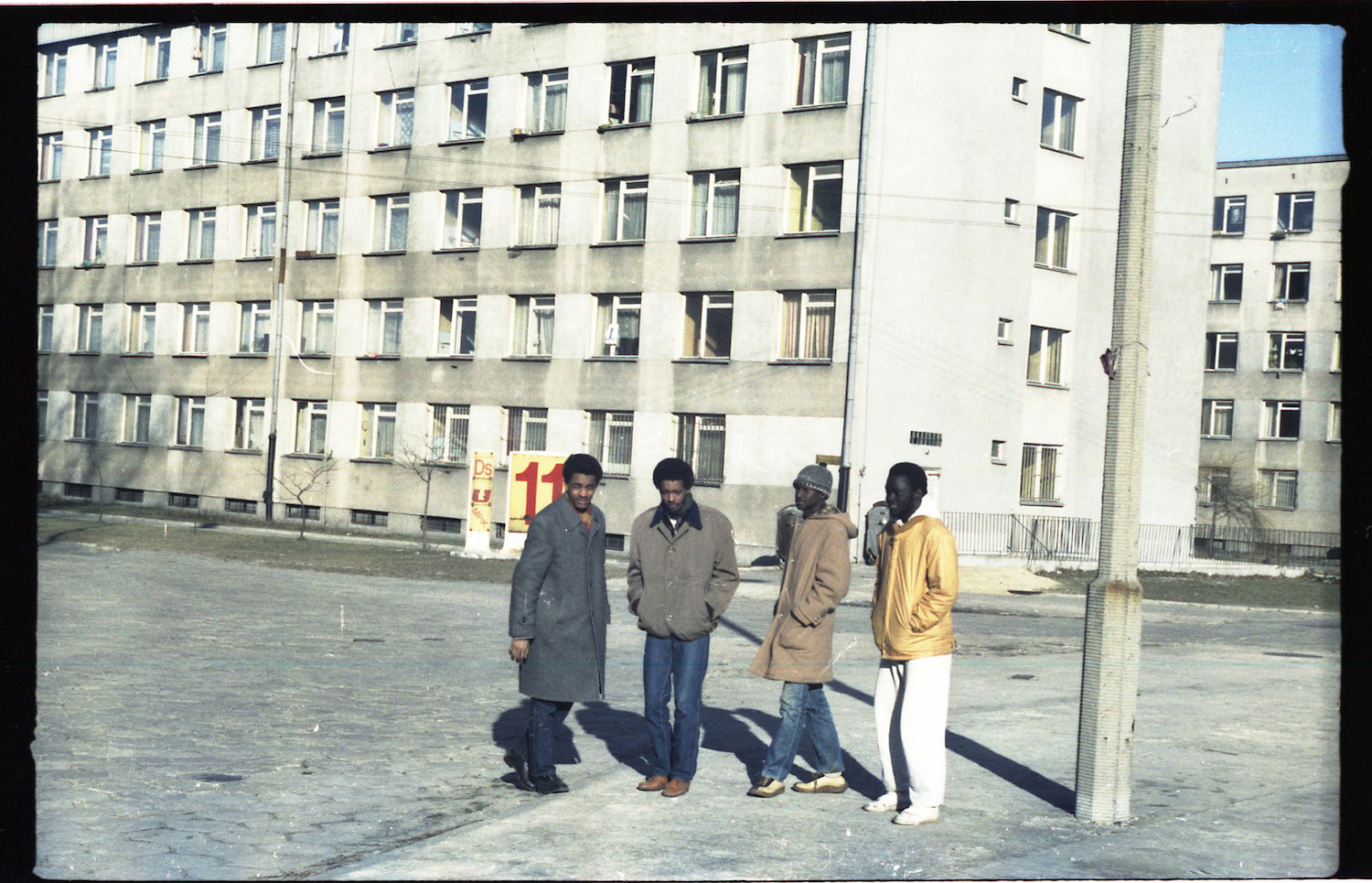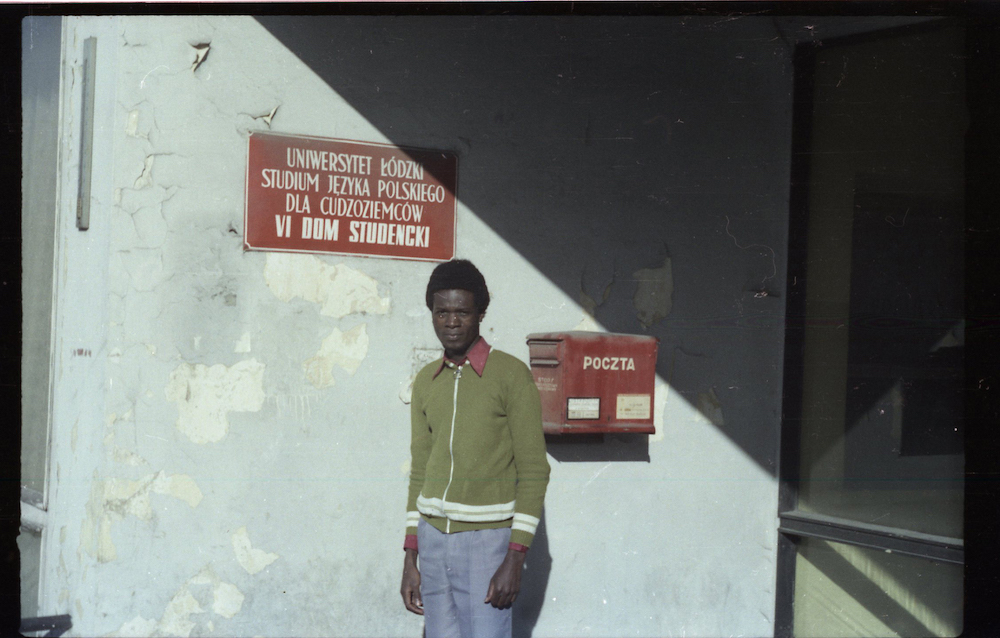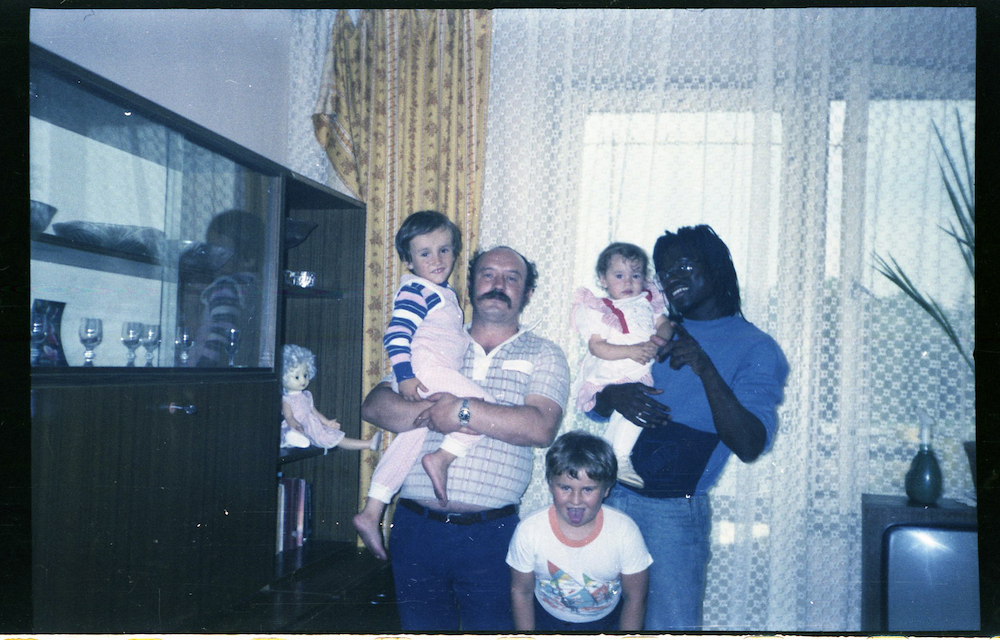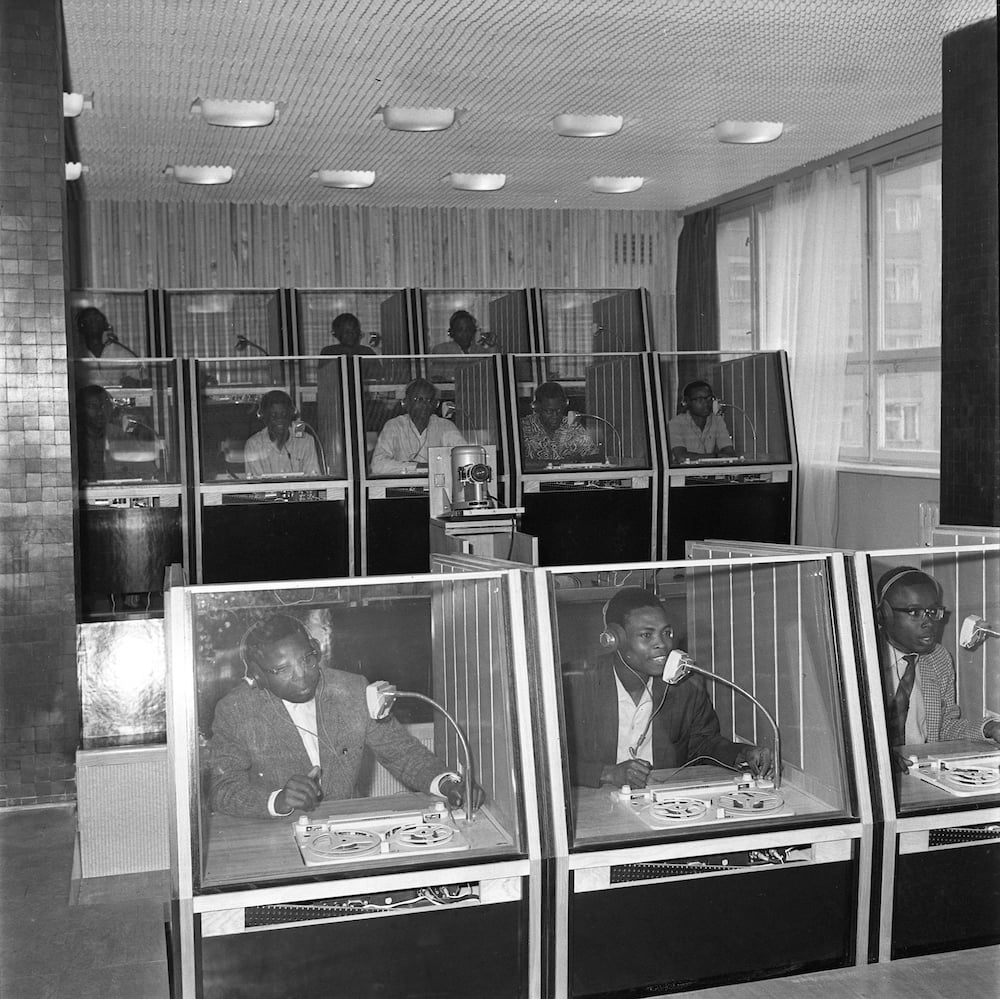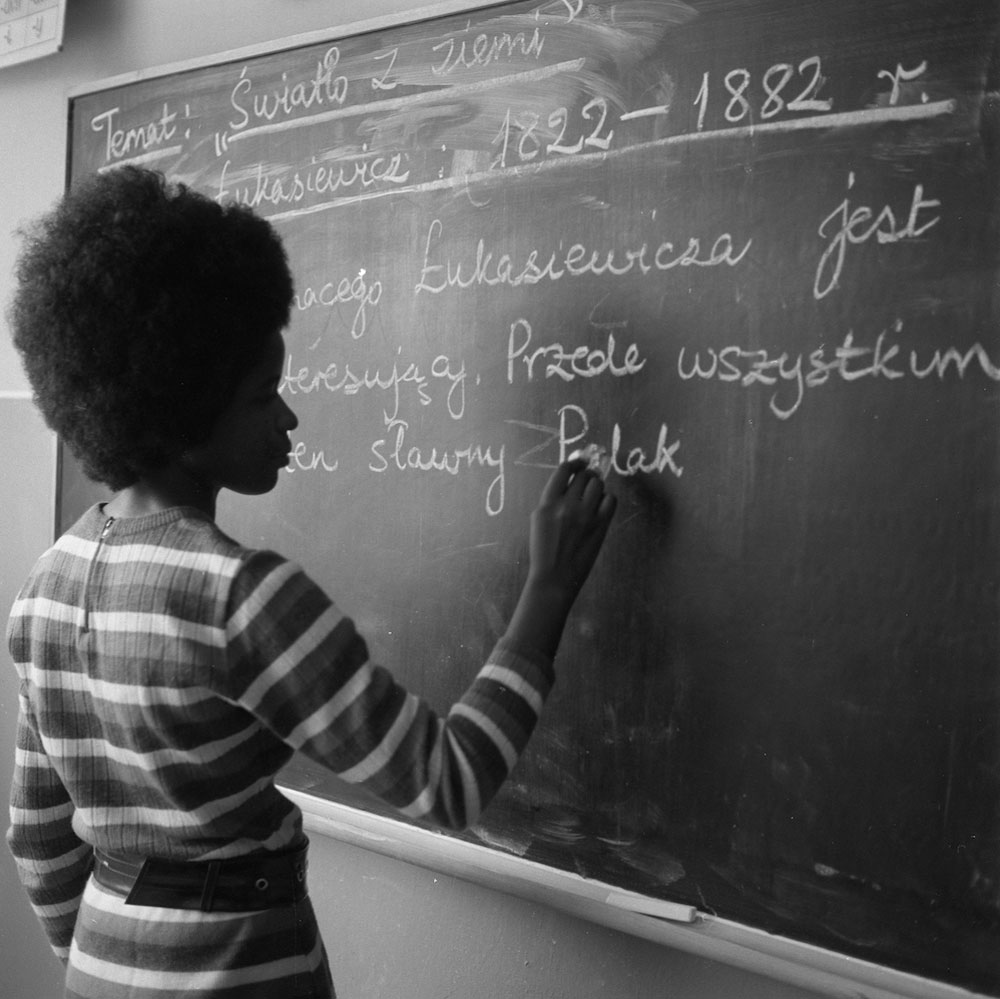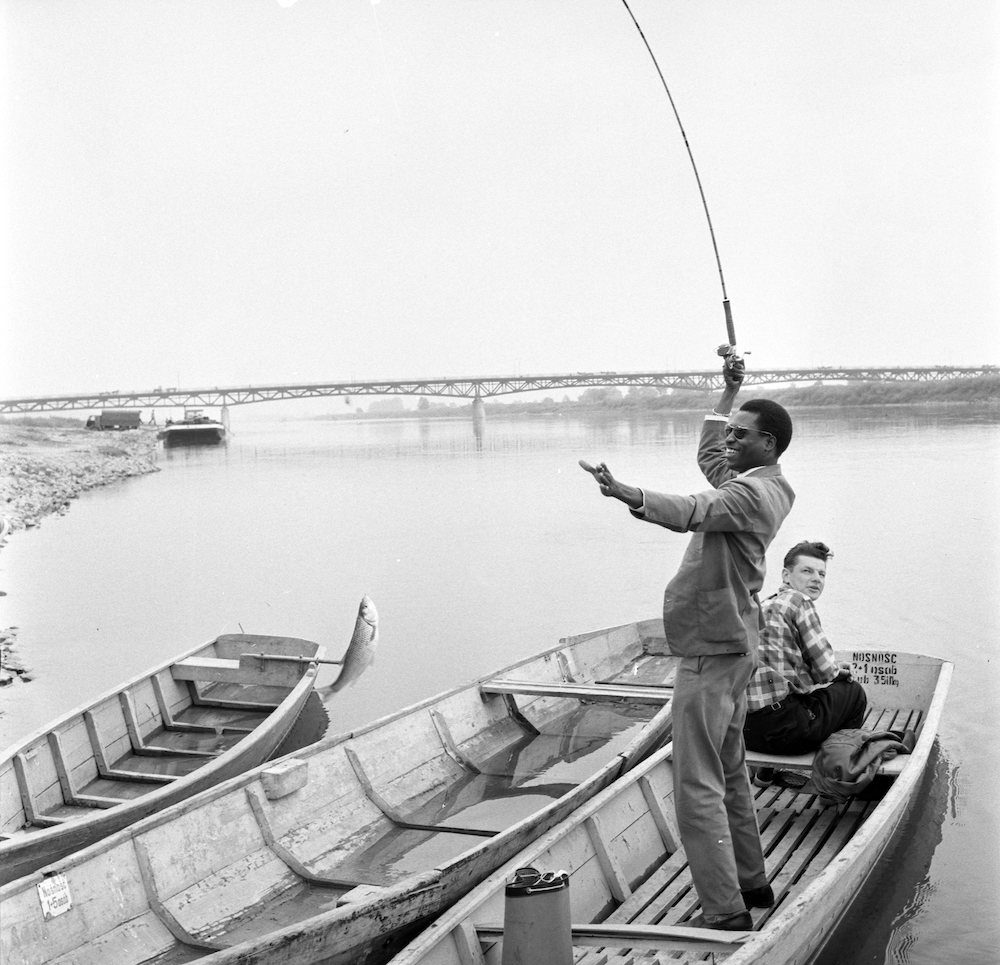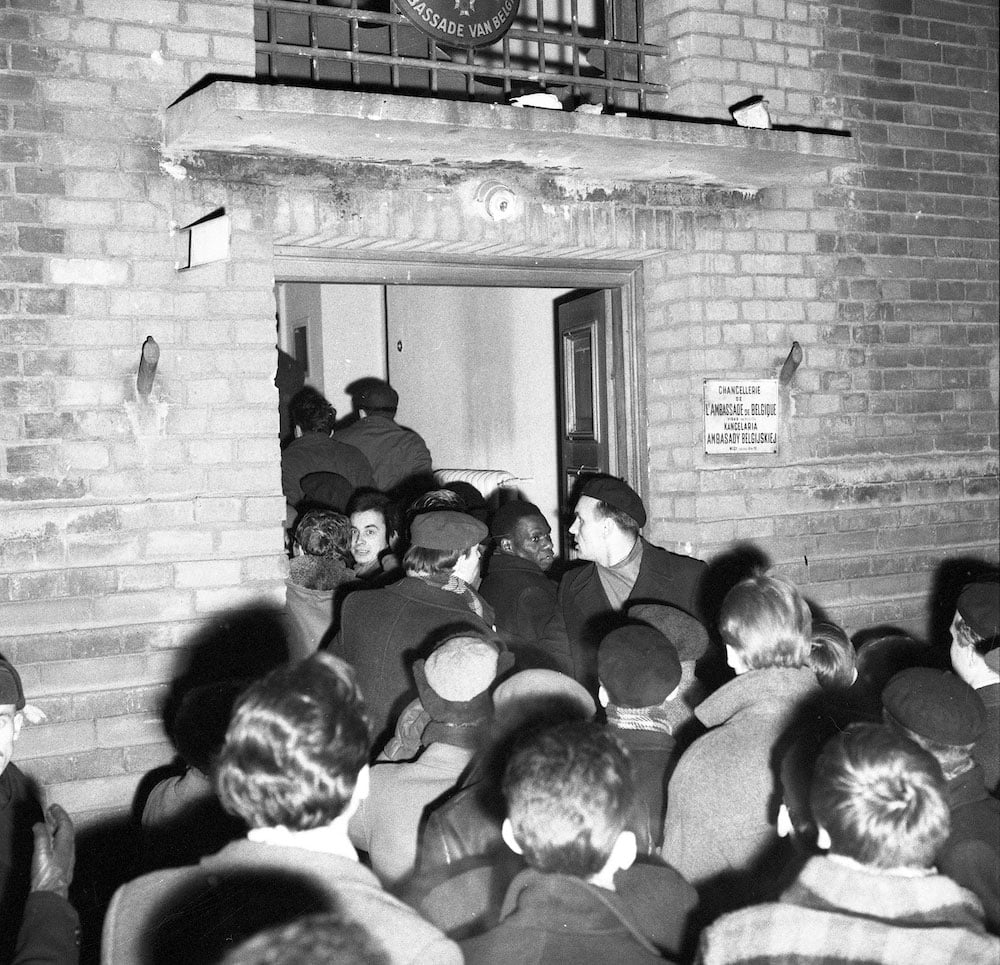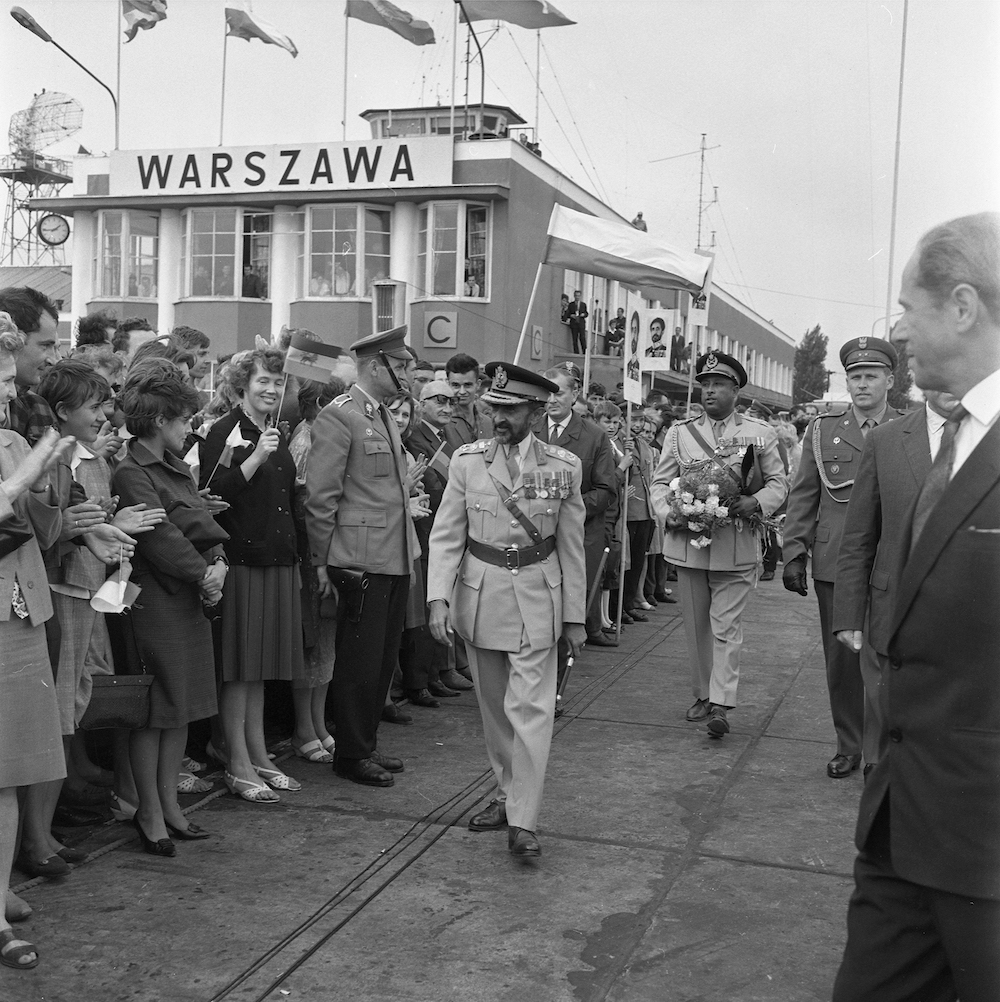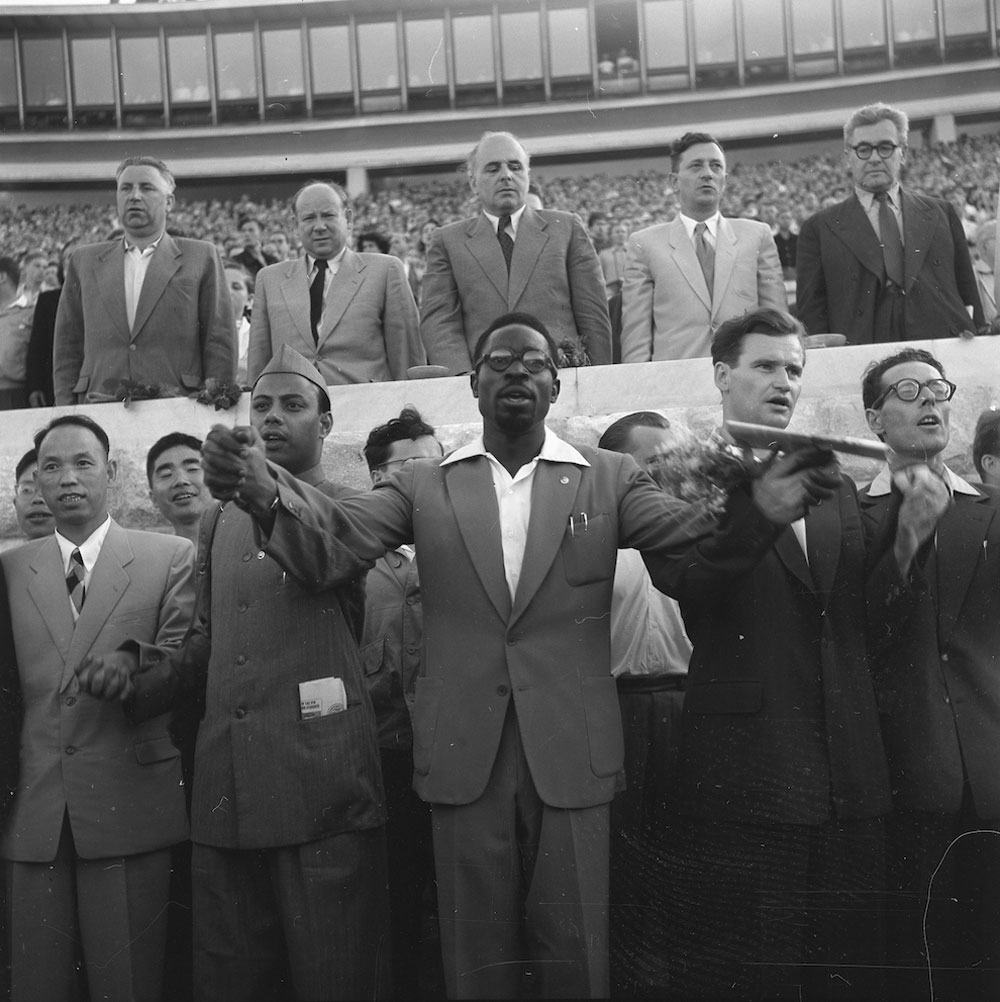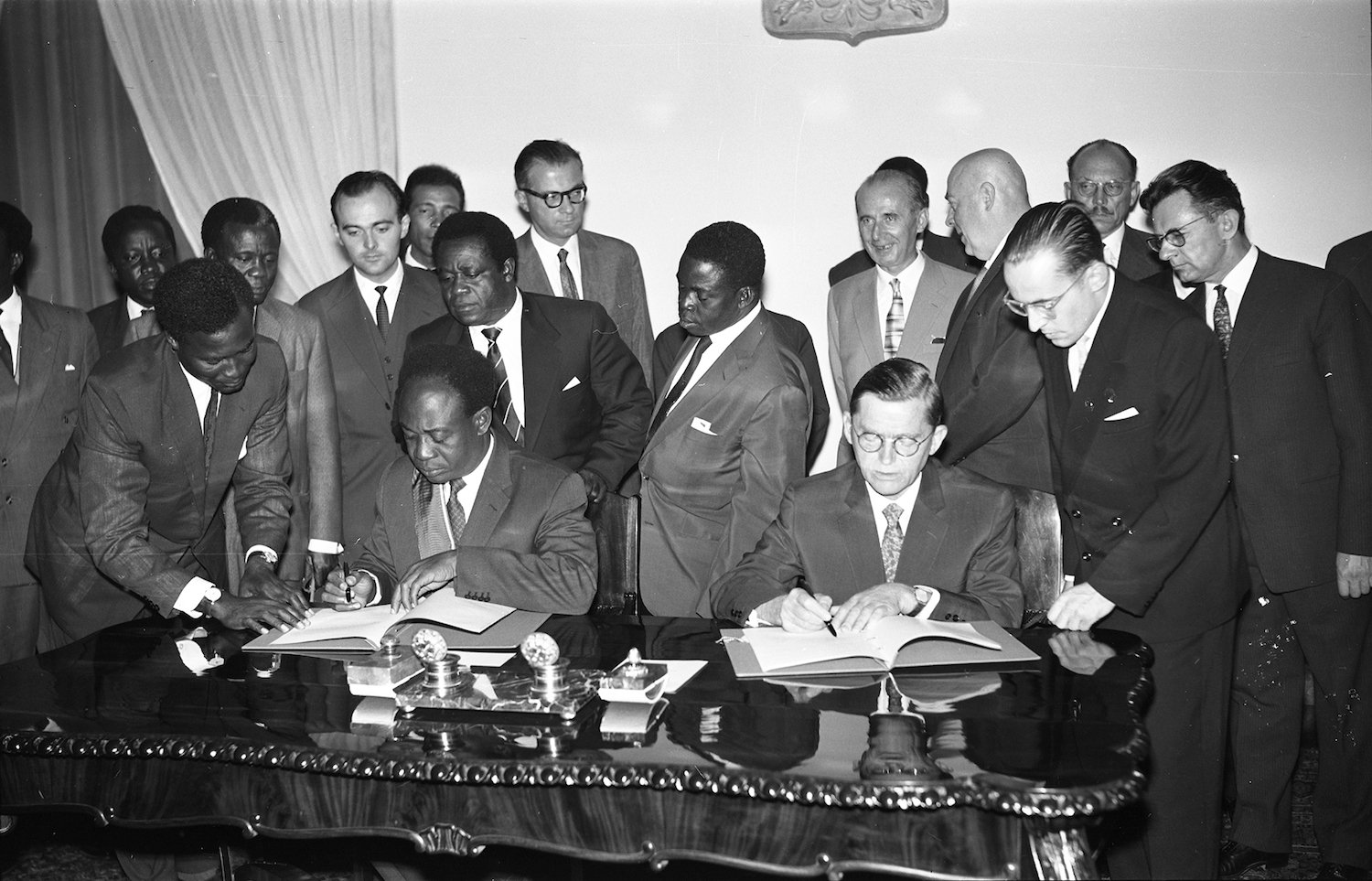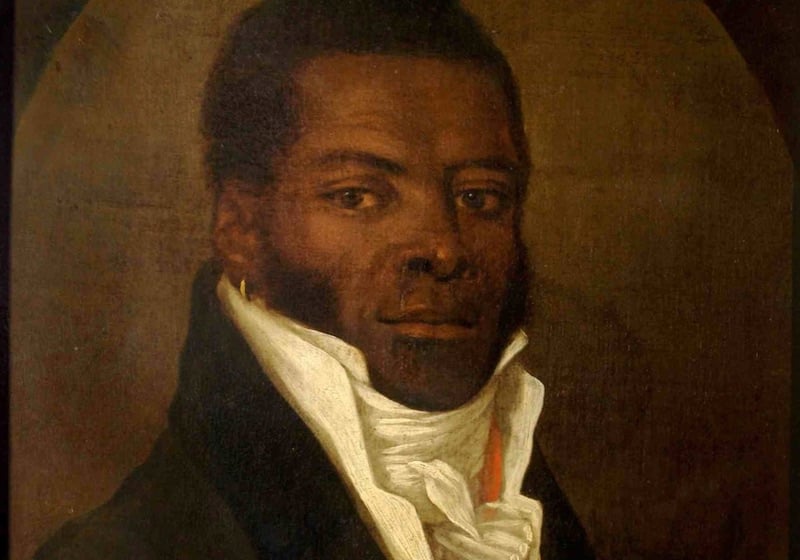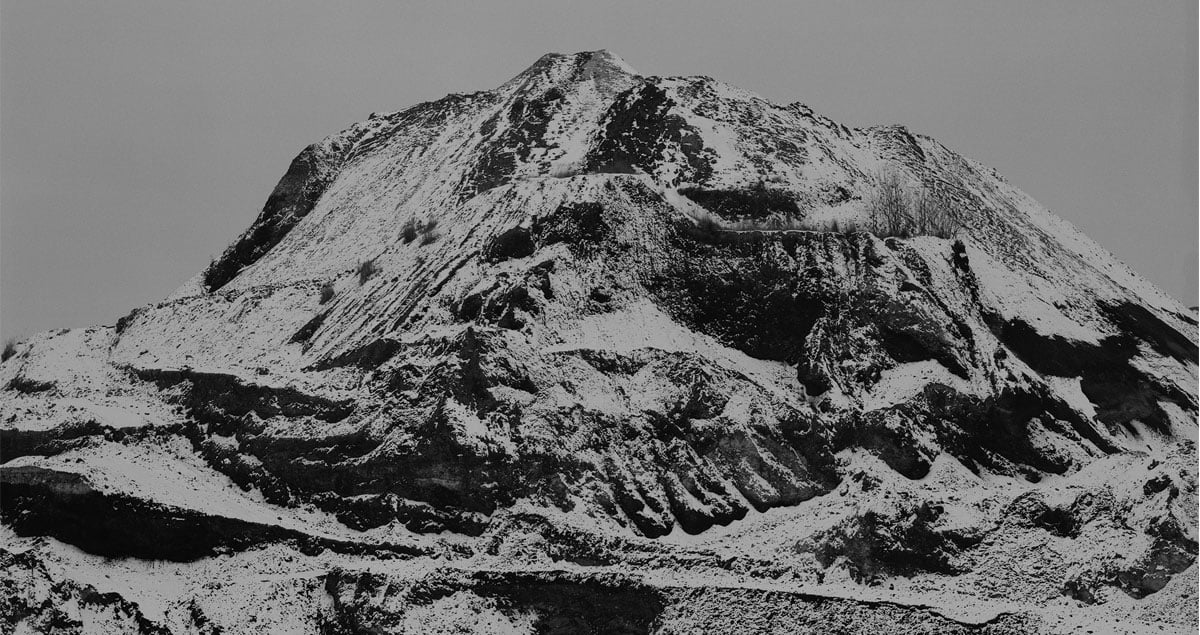Afro-Poland: a revolutionary friendship, captured in rare photos from 1955-1989
This is our PolandIn 1955, the communist leaders of Polish People’s Republic (PRL) began to promote socialism and solidarity to the soon-to-be independent African states. The legacy of Polish relations with Africa — which lasted several decades — now lives on in photos from the Polish Press Agency's archive
Between 31 July and 14 August 1955, the 5th World Festival of Youth and Students was held in Warsaw. The festival — organised by the anti-imperialist and left-wing World Federation of Democratic Youth — gave Poles the opportunity to meet around 30,000 delegates from 114 countries, incorporating other Eastern Bloc allies, revolutionaries from South America and young socialists from the postwar capitalist West. 911 African delegates from colonial states still largely subordinate to European powers were also in attendance. For the communist leaders of the Polish People’s Republic (PRL), this was a timely occasion to promote socialism and solidarity with the soon-to-be independent African states. For Polish citizens,it was one of the first opportunities to interact with non-white people after the destruction of the multicultural Second Polish Republic during the Second World War.
None of this was lost on the Polish Press Agency, whose journalists were tasked with documenting their African guests. The aim was to look beyond stereotypes of exoticism and present sisters, brothers and friends who could just as easily live in Polish society. The festival was the catalyst for a decades-long series of Polish press photographs showing people of African descent (PAD) visiting and living in Poland. Bartosz Nowicki, a Polish photographer and curator who currently lives in Wales, has spent the past few years researching these archive photos from the period 1955-1989. He recently curated an exhibition, Afro PRL, which highlighted the long-standing connections between white Poles and PAD, a memory that is often forgotten in contemporary Poland.
Nowicki’s exhibition revealed the myriad ways in which PAD stood alongside white Poles during the communist era. The World Festival of Youth and Students was simply a starting point, after which students from Africa were encouraged to study at Polish universities — as well as elsewhere in the Soviet sphere of influence. This was most keenly emphasised in Poland following the events of 1960, when 17 African countries declared independence from colonial rule. The arrest and murder of the Congo’s first democratically-elected Prime Minister, Patrice Lumumba, was widely covered in the Polish press, alongside solidarity protests in Warsaw. Photos from these demonstrations show Polish students hand-in-hand with PAD. According to Nowicki, this was — in part — a technique to depict a humane Poland in contrast to a brutal West. “They were really fighting against the Americans on the level of race,” he explains. “You could see how horrible American race rhetoric was, look what was happening to the people — lynching, and so on.”
In this respect, there is an ideological dimension to the photos, one which we can consider typical of the Cold War period. Various international leaders were invited to the Eastern Bloc from the 1960s onwards, especially from nascent independent states. In Poland, the 60s and 70s entailed engagement with a number of prominent African politicians, such as Kwame Nkrumah (Ghana), Haile Selassie (Ethiopia), Agostinho Neto (Angola) and Oluseguna Obasanjo (Nigeria). In the press, these visiting representatives were depicted as comrades, whose historical fate and ambitions — total disarmament and the fight against imperialism — were in direct alignment with those of the Polish people, in spite of any systemic or cultural differences.
The photos also highlighted to the Polish public that young people from Africa were now studying and living in Poland. “You realise that most of the images from the period, even if they are not about university or about studying, are actually of African students,” Nowicki tells me. After carrying out a year-long induction at the Polish Language Centre for Foreigners in Łódź, overseas students were free to attend Polish universities. PAD formed a large part of this contingent, starting off with around four students in 1958 and growing to a peak of around 2,000 in the 70s. Their photos were regularly displayed in Polish newspapers, albeit in an exoticising manner.
This tripartite balance between honest representation, propaganda and exoticism is most apparent in features from Polish Monthly (Miesięcznik Polish), an English-language magazine that was distributed exclusively from foreign embassies across the world. As Nowicki explains, its portrayal of thriving diversity in the PRL is often couched within an exclusionary subtext.
“Until recently, many Poles didn’t know about Polish refugees in Africa”
“There are these pictures of an African and Polish family,” he says. “The mother speaks about the child as Congolese, yet in her mind — or for the newspaper editors — it doesn’t even come close that this boy could be Polish. It’s strange, but fascinating, because it’s a really positive view up to a certain point. You are here, we support you, we support your country. But after you finish your study, you go and spread socialism in your country. And if you have children they are Congolese. So it was hard to stay, but some of course managed.”
Those PAD who did stay in Poland found themselves in a vastly-changed political environment, something that Nowicki experienced first-hand when visiting his family with his Guinean partner. “We went to the town where I grew up, a population of 5,000. The cars were slowing down, people were looking at her. I wouldn’t say that it was really negative in terms of racism, they were more curious,” he recalls. “We were laughing then, it was like she was a movie star or something. But in fact I started thinking, if you face that every day — people pointing you out — you must really feel like an ‘Other’.”
James Omolo, a Warsaw-based writer, lecturer and activist of Kenyan descent, is all too familiar with the type of story told to Nowicki. After a night out during his first week in Poland in 2008, Omolo and his friends were subjected to racism. “We were going up the stairs of the central metro station and a couple of guys came and spat on us and said ‘white power’.” Following this incident, Omolo began to experience more and more micro-aggressions — including verbal abuse and assaults. At the time, he was studying at a university where white Polish students tended to be more open-minded and tolerant. However, on the streets of the capital, it was a different matter for Omolo and other PAD.
Although Omolo has experienced racism since the time of Poland’s previous government — Donald Tusk’s Civic Platform — he believes that the situation has become worse for all non-Poles since the Law and Justice (PiS) party was elected to power in 2015.
“This administration are trying to create bottlenecks, especially for the civil society. Immediately after getting into power, they disbanded the Commission for Discrimination, they disbanded the Department of Hate Crime Control under the Ministry of Interior, they disbanded the Department for Women’s Rights, they moved it to trafficking. They also created a special unit for monitoring the work of civil society and NGOs. That’s one of the reasons why these issues are mushrooming and increasing dramatically — there’s no proper channel to provide assistance.”
Omolo suggests that while Poles may have less contact with non-white people — compared to those in countries such as the United Kingdom, France or Germany — this does not entirely explain why PAD experience racism in Poland. Instead, he believes that Polish people have often been exposed to literature and screen media that demean those from the African continent, thereby perpetuating the idea that white people are superior. For Omolo, this makes Poles more likely to believe negative, unfounded stereotypes about PAD, such as those espoused by the PiS party leader, Jarosław Kaczyński. “When Kaczyński said that Europe should not accept refugees from Africa because they’re carrying some diseases that are not in Europe — most of them bought it actually,” Omolo recounts. “What about Poles who visit Africa and come back? Are they not coming with some protozoa?”
Poland’s history as the multicultural heart of Europe — a place that, prior to the Holocaust, was home to the majority of European Jews, and for over three centuries has been home to the Polish-Muslim Tatars — appears to be forgotten by many in modern Poland. Omolo believes that if Poles re-engage with their history, they might understand PAD in a more positive light. “Until recently, many Poles didn’t know about Polish refugees in Africa,” he explains, referring to the Polish refugees resettled in East African British colonies during the Second World War. “These days, they also face the same problem when going abroad. They should understand how it feels to be subjugated. They do not understand how close their culture and most African cultures are.”
As a Pole who moved to the UK in the middle of tabloid hysteria against Central and Eastern Europeans, Nowicki can — to some extent — relate to the feeling of unwarranted rhetoric and discrimination. He shares Omolo’s view that Poles might be unfamiliar with their history, adding that the Polish state tends to dismiss anything associated with communism, including the former ties with African countries and citizens.
“You have to understand that it was a really difficult transition from communism after 1989. Poland still hasn’t healed from that today. For Poles, communism is bad. Even if some things were better — perhaps, maybe — they weren’t. Because that was communists, communists did that and did this. Yes they did. What they did to the country was difficult, it put Poland in a difficult situation. There were repressions, there were all these bad things. But there was, for example, this co-existence with African people as well. And from that, today, we could learn. Especially now, it’s pertinent to discuss these ideas of inclusion. I think that’s why the Afro PRL exhibition is important, because it brings something to the discourse about otherness and how to deal with that.”
